Write! Write! Write! That’s the mantra, and the last couple of weeks have certainly demonstrated how to do it. Well, except for the writing most important at the moment – Thomas Edison. Otherwise there was big news on collusion by climate deniers, Abraham Lincoln’s commencement address (of sorts), sadness over the Selma 50th anniversary, and much more.
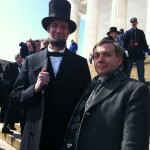 Here on Science Traveler the focus was on Abraham Lincoln, with several events commemorating his 2nd Inauguration and one of the finest speeches ever delivered. A Busy Week for Abraham Lincoln sums up the biggest events, and His Greatest Speech looks specifically at the “With malice toward none; with charity for all” elocution that is one of his best. Additional background on the events can be read here.
Here on Science Traveler the focus was on Abraham Lincoln, with several events commemorating his 2nd Inauguration and one of the finest speeches ever delivered. A Busy Week for Abraham Lincoln sums up the biggest events, and His Greatest Speech looks specifically at the “With malice toward none; with charity for all” elocution that is one of his best. Additional background on the events can be read here.
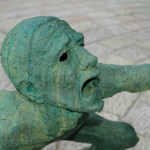 That wasn’t all Science Traveler was about. I also posted a photo retrospective of the Holocaust Memorial in Miami Beach, one of the most haunting, and powerful, memorials I’ve ever seen. To balance the heaviness of that piece, check out the lighter side of things by exploring how two events in my writing world – Tesla and Edison – helped Barnes and Noble stock skyrocket in one day!
That wasn’t all Science Traveler was about. I also posted a photo retrospective of the Holocaust Memorial in Miami Beach, one of the most haunting, and powerful, memorials I’ve ever seen. To balance the heaviness of that piece, check out the lighter side of things by exploring how two events in my writing world – Tesla and Edison – helped Barnes and Noble stock skyrocket in one day!
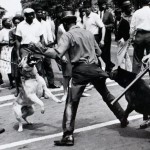 On Hot White Snow I took a look at how we’ve moved Forward to the Past on the 150th anniversary of the 13th Amendment and the 50th anniversary on the fateful march on Selma that led to the Voting Rights Act. How far we’ve regressed on our previous gains is saddening – and should be maddening – to us all. Also on HWS I tried my hand at microfiction, the art of writing a story in 100 words or less, with a piece I called The Case of the Hated Haberdasher.
On Hot White Snow I took a look at how we’ve moved Forward to the Past on the 150th anniversary of the 13th Amendment and the 50th anniversary on the fateful march on Selma that led to the Voting Rights Act. How far we’ve regressed on our previous gains is saddening – and should be maddening – to us all. Also on HWS I tried my hand at microfiction, the art of writing a story in 100 words or less, with a piece I called The Case of the Hated Haberdasher.
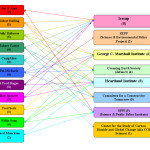 The Dake Page posted a series of climate change-related pieces since the last update. Part 4 of the series on peer-review examined how some people have tried to get around peer-review using the internet, with sometimes nefarious results. You can read Parts 1 though 3 by following the links in Part 4. The most recent post takes a look at collusion among climate deniers, where lobbyists, “skeptic” scientists, and media have worked together to intentionally misrepresent the science and misinform the public. The collusion became evident as climate deniers try to block release of the new documentary based on the Oreskes and Conway book, Merchants of Doubt. Here’s the trailer for the movie:
The Dake Page posted a series of climate change-related pieces since the last update. Part 4 of the series on peer-review examined how some people have tried to get around peer-review using the internet, with sometimes nefarious results. You can read Parts 1 though 3 by following the links in Part 4. The most recent post takes a look at collusion among climate deniers, where lobbyists, “skeptic” scientists, and media have worked together to intentionally misrepresent the science and misinform the public. The collusion became evident as climate deniers try to block release of the new documentary based on the Oreskes and Conway book, Merchants of Doubt. Here’s the trailer for the movie:
David J. Kent is the author of Tesla: The Wizard of Electricity (2013) and Edison: The Inventor of the Modern World (2016) (both Fall River Press). He has also written two e-books: Nikola Tesla: Renewable Energy Ahead of Its Time and Abraham Lincoln and Nikola Tesla: Connected by Fate. His next book is on Abraham Lincoln, due out in 2017.
Follow me by subscribing by email on the home page. And feel free to “Like” my Facebook author’s page and connect on LinkedIn. Share with your friends using the buttons below.



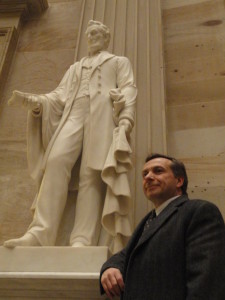 And what a week it was. March 4th marked the 150th anniversary of Abraham Lincoln’s second inauguration and there were several events in Washington DC and elsewhere to commemorate the occasion. And several cool opportunities to hang out with Lincoln scholars, famous actors, and distinguished members of the Supreme Court (not real) and the press (real).
And what a week it was. March 4th marked the 150th anniversary of Abraham Lincoln’s second inauguration and there were several events in Washington DC and elsewhere to commemorate the occasion. And several cool opportunities to hang out with Lincoln scholars, famous actors, and distinguished members of the Supreme Court (not real) and the press (real).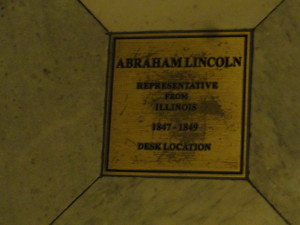
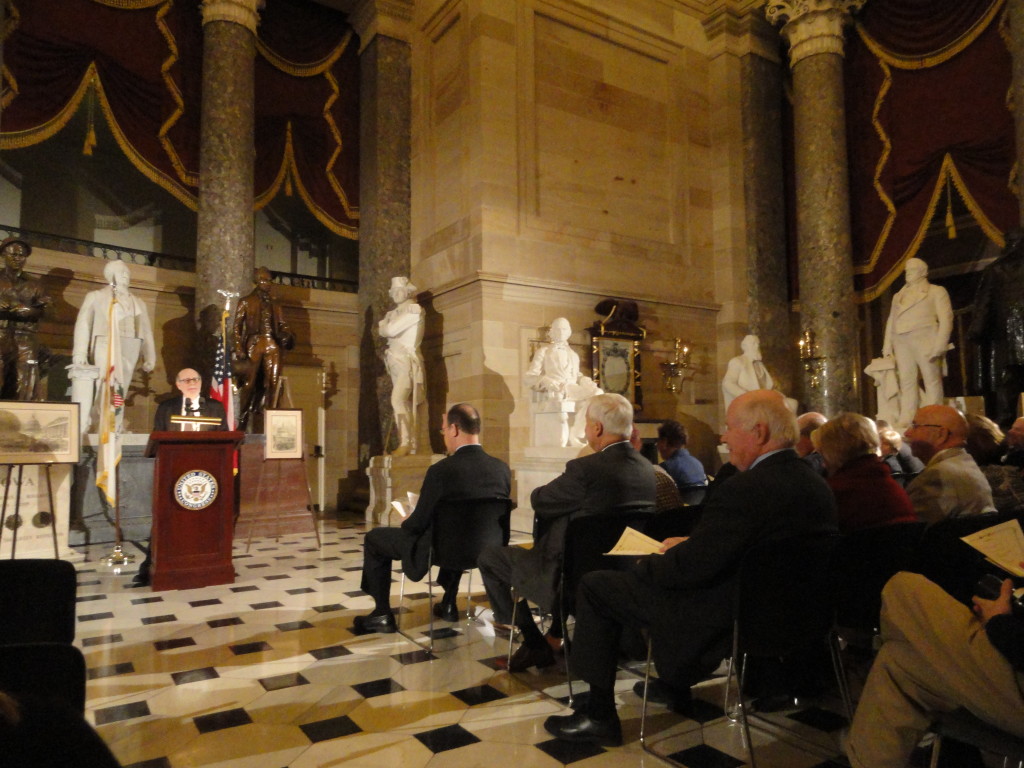
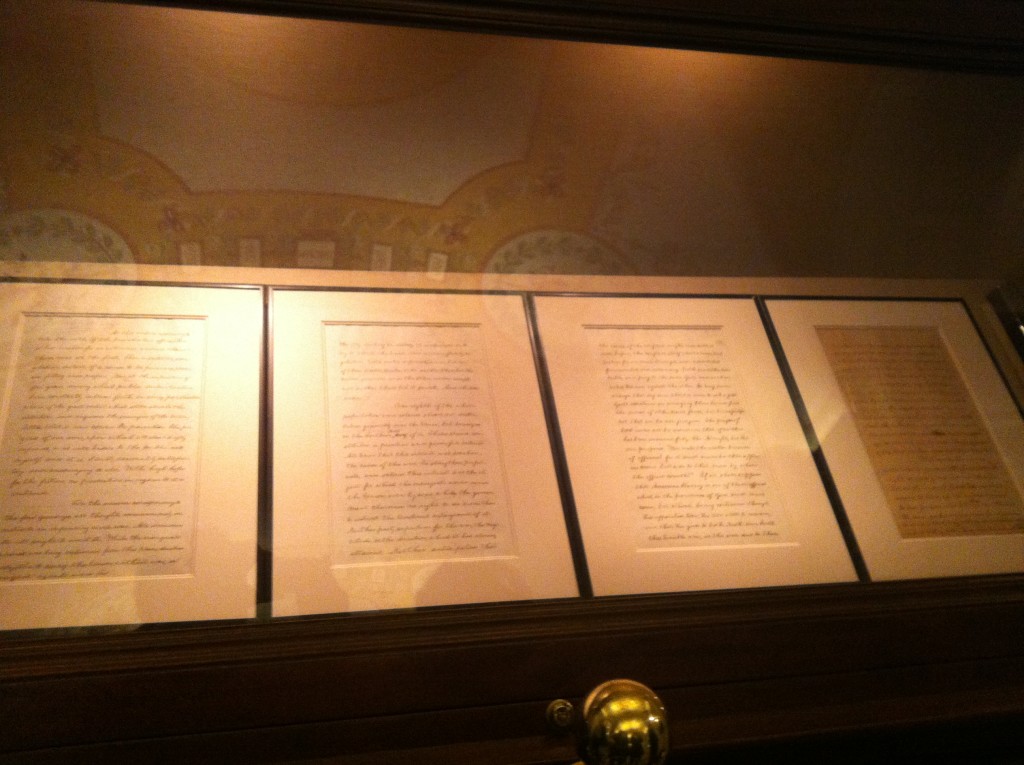
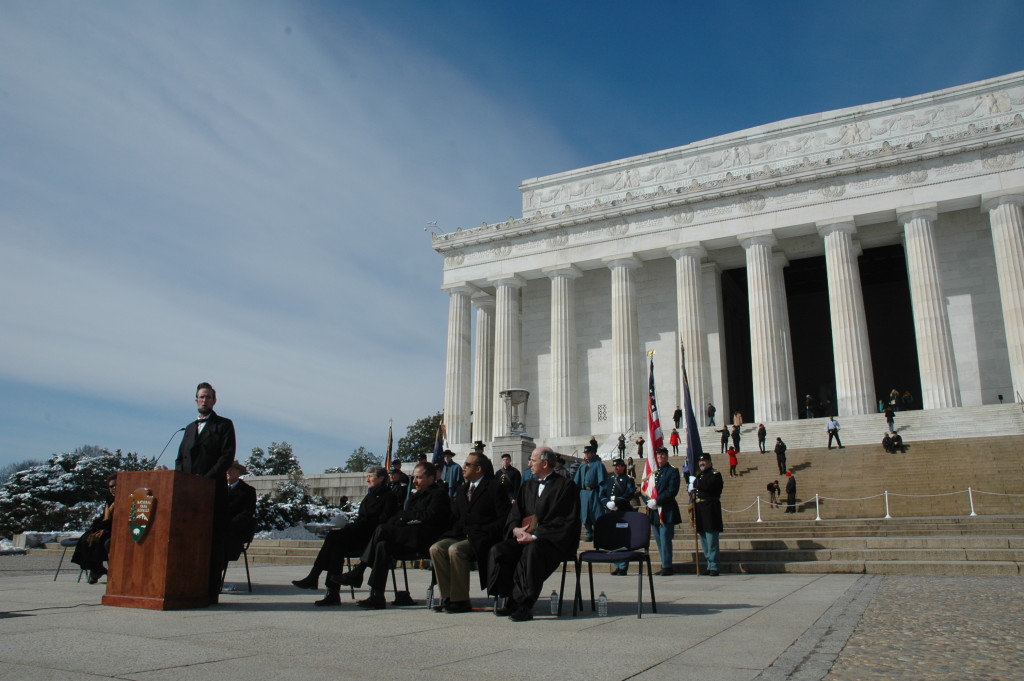
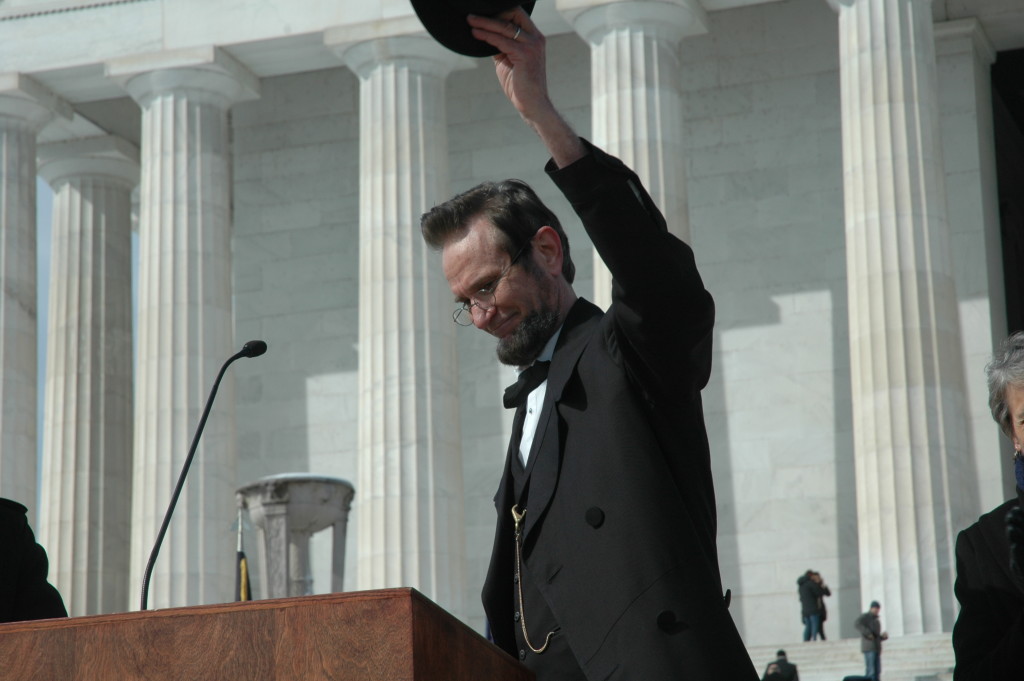
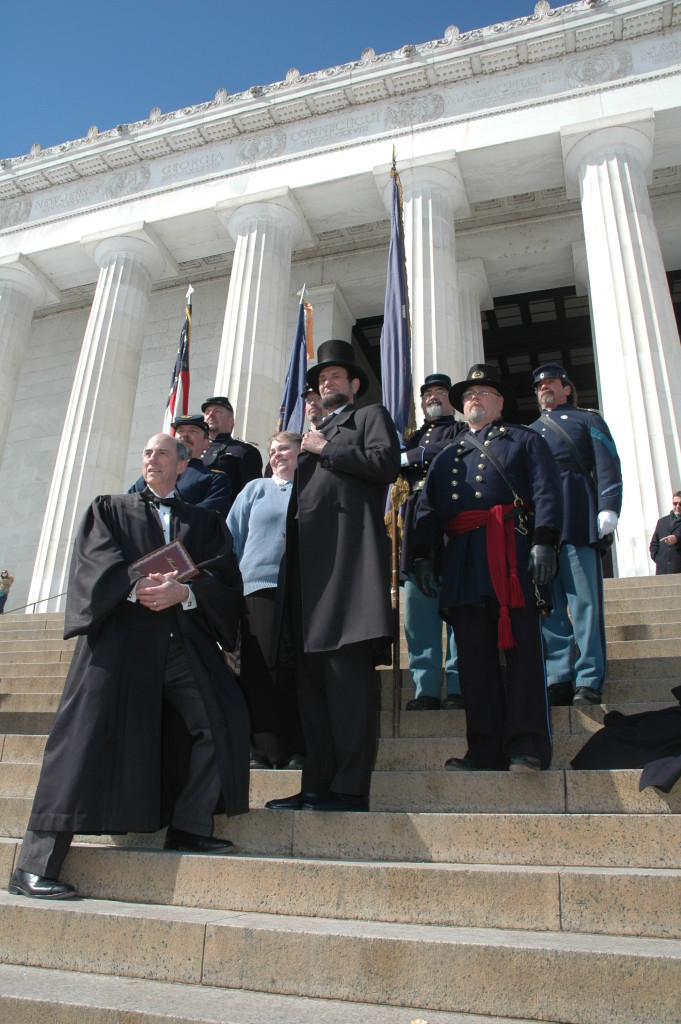
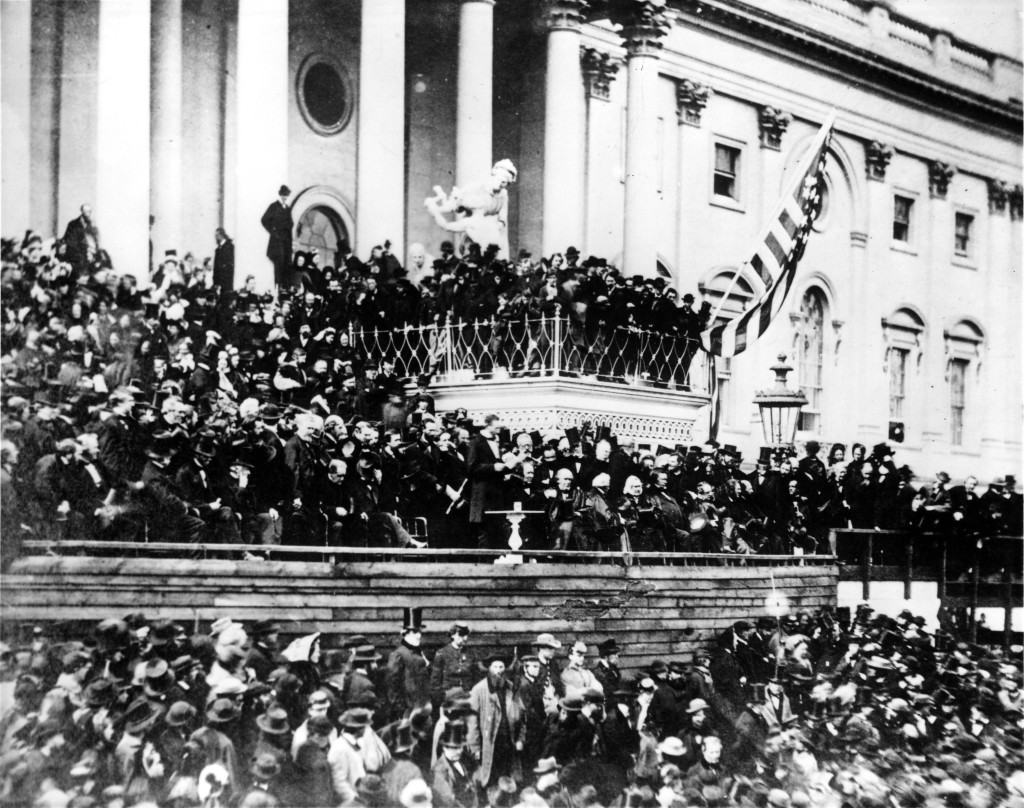
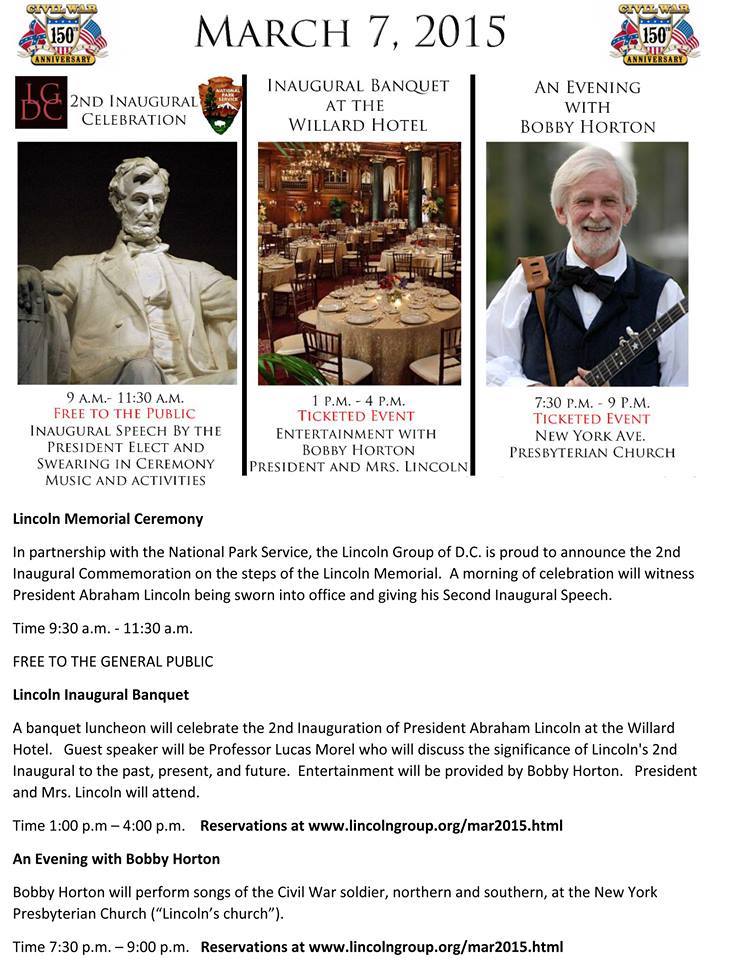
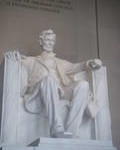 In partnership with the National Park Service, the
In partnership with the National Park Service, the 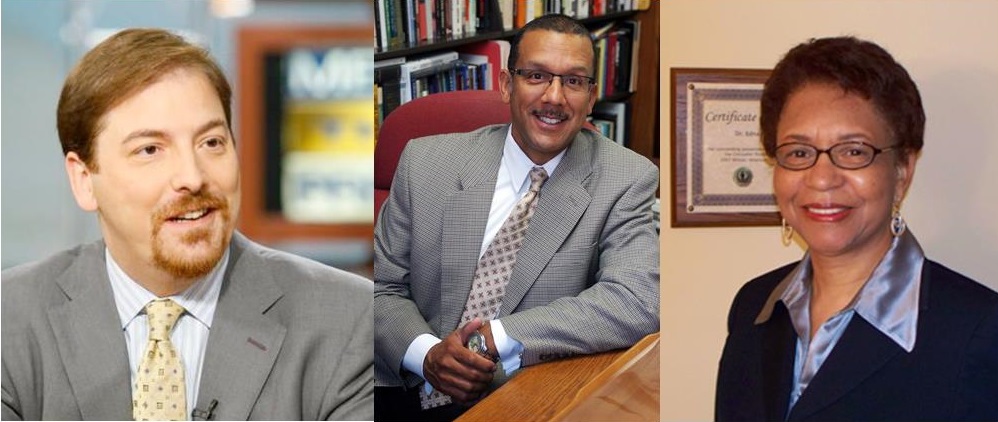
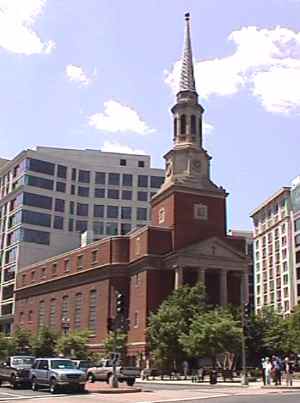
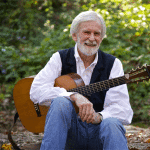 Cap off the day with an amazing concert at
Cap off the day with an amazing concert at 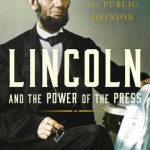 Harold Holzer shows why he is considered the leading Abraham Lincoln expert as he adds to his tremendous legacy of scholarship. The focus of this latest book is Lincoln’s relationship with the press. It’s important to know that the newspapers of the day were highly partisan and often closely aligned with a particular party or candidate. They were also fiercely antagonistic to each other and to the opposing party. If a politician didn’t have a good relationship with the press, they had no compunction to viciously and directly attacking him, and in many cases, making things up.
Harold Holzer shows why he is considered the leading Abraham Lincoln expert as he adds to his tremendous legacy of scholarship. The focus of this latest book is Lincoln’s relationship with the press. It’s important to know that the newspapers of the day were highly partisan and often closely aligned with a particular party or candidate. They were also fiercely antagonistic to each other and to the opposing party. If a politician didn’t have a good relationship with the press, they had no compunction to viciously and directly attacking him, and in many cases, making things up.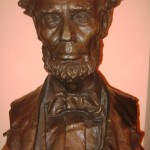 Today is the 206th birthday of Abraham Lincoln, our 16th and perhaps most well known President. And as usual, I’m chasing Abraham Lincoln.
Today is the 206th birthday of Abraham Lincoln, our 16th and perhaps most well known President. And as usual, I’m chasing Abraham Lincoln.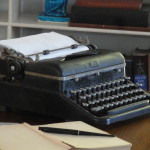 So what has life been up to lately? Here on Science Traveler I did some science traveling into the lands of sea grass, alligators and iconic writers. I found out that
So what has life been up to lately? Here on Science Traveler I did some science traveling into the lands of sea grass, alligators and iconic writers. I found out that  Science Traveler also delved into the science of Lincoln’s interest in, well, science. In particular his use of
Science Traveler also delved into the science of Lincoln’s interest in, well, science. In particular his use of 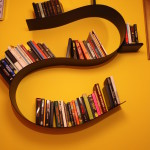 Hot White Snow reminisced about
Hot White Snow reminisced about 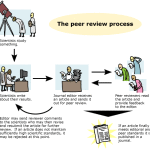 The Dake Page took on two serious topics to help communicate science to the public.
The Dake Page took on two serious topics to help communicate science to the public. 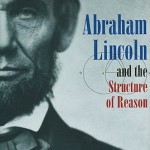 The main thesis of this book is that Abraham Lincoln’s greatness came from his mastery of the “six-books of Euclid” geometry, and the subsequent application of the six elements of Euclid into his logic, reasoning, and speeches.
The main thesis of this book is that Abraham Lincoln’s greatness came from his mastery of the “six-books of Euclid” geometry, and the subsequent application of the six elements of Euclid into his logic, reasoning, and speeches.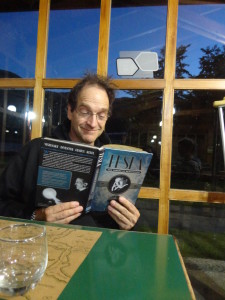
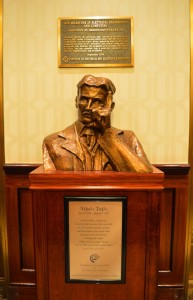
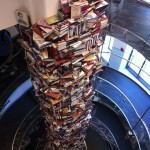 I’m lucky to have a growing collection of books about Abraham Lincoln. Nowhere near the 15,000 books reportedly written about our 16th President, but my sagging bookshelves now hold over 900 titles. The number of actual books is well over 1000 when one figures that some “titles” are 3 or 6 or 10-book sets.
I’m lucky to have a growing collection of books about Abraham Lincoln. Nowhere near the 15,000 books reportedly written about our 16th President, but my sagging bookshelves now hold over 900 titles. The number of actual books is well over 1000 when one figures that some “titles” are 3 or 6 or 10-book sets.






